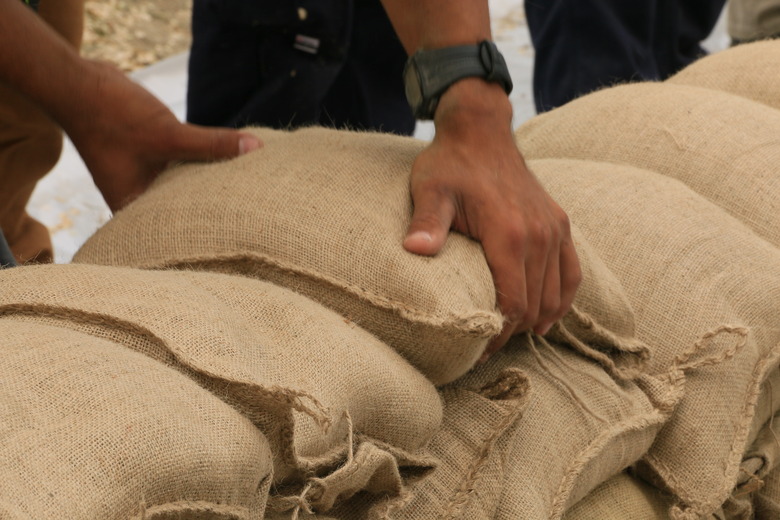How To Sandbag A Home To Prevent Flooding
We may receive a commission on purchases made from links.
Flooding can happen anywhere and to anyone, and its effects can be devastating. At least it's often possible to anticipate flooding, whether that's because a massive storm is forecasted or because your home floods every time a big snowfall melts. Making a sandbag barrier can help protect your home from flooding; in fact, homeowners have been relying on this old-school method for centuries. While sandbagging can be a long and physically demanding project, figuring out what to do if your home floods is harder.
How to Make Sandbags
How to Make Sandbags
Sandbags have commonly been made using burlap bags, and you can still buy and fill burlap bags for this purpose. The biggest downside of using burlap is that it tends to take on a musty smell after getting wet. Today, many people prefer to make flood barriers using polypropylene sandbags, which are sturdy enough to be used over and over again. Both types of bags are readily available in home improvement stores.
If you don't have a source of sand near your home, buy bagged sand from a home improvement store or use sandy soil to fill the bags. Rocky soil isn't a good sandbag filler, as the water will flow right through any tiny gaps between pebbles.
Grab a second person to help you make sandbags to prevent flooding. Both people should wear gloves and protective eyewear. Fold over the top of the empty bag and hold it open in front of you so the bottom of the bag rests on the ground while the second person maneuvers shovelfuls of sand or soil into the bag. When the bag is one-third to one-half full, fold over the top of the bag (or tie it closed if you need to transport the bags).
Creating a Sandbag Flood Barrier
Creating a Sandbag Flood Barrier
Once the sandbags are filled, you're ready to arrange them outside your home. Create a pyramid shape for the best protection and the most stable barrier. For example, say you want to make a barrier that's 10 feet long. The first layer might be a rectangle made of 10 sandbags across and five bags deep. The second layer would be 10 sandbags across and four bags deep, the third layer would be 10 sandbags across and three bags deep and so on.
As you place each bag, make sure its bottom seal is closest to the water and its opening faces the house. This will minimize the chance that soil or sand will come spilling out of the bag. If the bags are untied, position each one so the folded flap is facing down. Arrange the bags so the edge of one bag overlaps with the edges of the bags on either side of it. After finishing a layer of overlapped bags, use a shovel or your foot to tamp them down and close any air pockets before adding the next layer.
How many bags you'll need depends entirely on how large of an area you're protecting and how high you want the barrier to be.
Alternatives to Sandbags
Alternatives to Sandbags
Sandbags can be fairly effective at preventing a home from flooding, but they're not feasible for everyone. Someone who lives alone may not have a second person available to help fill and move sandbags. Older people and disabled people may not have the mobility to fill and move sandbags. Plus, flooding can come on quickly, and you may not have enough time to pull existing bags out of storage and create a barrier before the water comes.
There are a few alternatives to traditional sandbags that homeowners may want to consider. One option is reusable vinyl tubes, which come in a variety of sizes. Arrange the empty tubes in the place where you want to create a barrier and use a garden hose to fill them with water. Homeowners can also try absorbent self-inflating flood barriers. These lightweight bags expand when they're soaked with fresh water, so you can fill them right next to where you want to use them. They're reusable and return to being lightweight when they dry.
If you have persistent flooding of just an inch or so of water, you may want to buy long, narrow snake sandbags. Depending on how much sand you add to one of these bags, it may be just a few inches high and easy to step over it. These bags minimize damage from minor flooding and may also keep drafts and insects from getting into your home.
